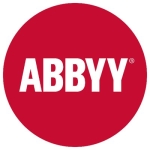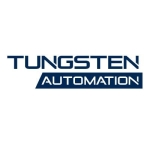What is our primary use case?
Our company uses the solution for automations.
As a portfolio manager, the key responsibility is to determine how to use our latest technologies for use cases. We identify use cases in various functions and buy software licenses for them.
Once we buy licenses, we use the solution for end-to-end discovery of use cases, onboarding in-house technical staff for ongoing management, and collaborations for training or licenses.
Our licenses are used by our technical team within our Center of Excellence. The team handles the end-to-end work that includes development, testing, quality assurance, and production. We are using the solution to its full capacity. Bots are at an optimum because we want to extract maximum value from our licenses.
We plan to increase usage once we finish migrating from on-premises to the cloud.
How has it helped my organization?
The solution has helped us embrace more of a digital transformation footprint, bring in efficiencies, and create an internal infrastructure.
What is most valuable?
The solution's architecture is very nice. The three components are a bot, a control room, and a bot developer.
The control room is quite a good feature. It is easy to use and gives you the power to manage your digital workforce. It gives you a sense of understanding in terms of how the audit trail happens.
What needs improvement?
The solution should include an analytics dashboard. As the space is maturing, many vendors sell functionalities as separate components so this is not unique to the solution. If I am buying a license, I should at least get a flavor of my analytics with a dashboard related to operational KPIs. Right now, if you want detailed analytics, you need to buy the dashboard separately. This licensing structure adds to the overall cost.
The solution should include bot insights instead of selling it as a separate license. From the bot and business perspectives, insights are important for operational agility metrics and managing KPIs. For example, I want to how many hours in a day or month a bot runs for human resources when it performs A, B, C, D, and E and gives benefits across D, E, and F.
For how long have I used the solution?
I have been using the solution for three years.
What do I think about the stability of the solution?
The solution is stable so I rate stability an eight out of ten.
What do I think about the scalability of the solution?
The solution is somewhat scalable so I rate scalability a six out of ten.
How are customer service and support?
We get the right support when we ask for it. Sometimes though, service requests are not handled within the timeframe we expect. Issues move in circles until they are placed with the proper technician.
There is definitely an opportunity to lessen the response time so I rate support a seven out of ten.
How would you rate customer service and support?
Which solution did I use previously and why did I switch?
I have prior experience with UiPath to a certain extent.
How was the initial setup?
The setup takes a good amount of time because you have to develop an infrastructure that includes servers and compliance. A lot of time is spent framing those requirements and signing contracts that are quite detailed.
I rate the setup a five out of ten because it is not that easy.
What about the implementation team?
We worked with technicians from the solution to implement.
There are some difficulties in migrating to a new platform. There are a lot of internal governance forms or approvals that can delay the process. Lots of things need to be reworked as you go through the process.
For about four to six months, you can take on the fixed paper side to get all the needed approvals. In some cases, the process might even take eight months because everything takes time and other business activities may take priority. Separate contracts need to be created for automations and they are usually handled by another team. Many approvals are needed at all levels of the organization.
We currently use the solution on-premises but are migrating to the cloud. This process is also not that smooth and requires nudging. We are going back to the drawing board to take another look at things and rework if needed. Most components should be scalable and reusable but we are having a few issues on that front.
Ongoing maintenance includes our internal team working with two or three of the solution's technicians to resolve issues. The solution's team routes or allocates the right technician to handle our service request. Our internal team supports and helps their technicians to understand our unique scenario.
What was our ROI?
The solution is definitely worth the money. It is up to you to add quality use cases and utilize the digital workforce along with the human workforce. The tools are there, but the actual metrics derived are your baby. There are many benefits to automation solutions.
I won't give 100% credit to the solution. Perhaps UiPath would have given us the same results. The way you use a solution makes all the difference in ROI.
What's my experience with pricing, setup cost, and licensing?
Similar to how competing products are priced, the solution has separate licenses for features that should be included in a bundle package. For example, the analytics dashboard and bot insights are sold as separate licenses.
No one wants to buy a product that is too complex because components are sold separately. Give longstanding customers these benefits as icing on the cake.
The solution is not the least or most expensive. Pricing is good and in the middle so I rate pricing a five out of ten.
Which other solutions did I evaluate?
The options were evaluated before I joined the team, but I believe the company also looked at UiPath, Info Sales, and XCL.
No tool, product, or technology is 100% foolproof. Each has its own set of pros and cons, including the solution.
The common sales approach across the solution and other vendors is misleading. They make it look like a utopia where you will increase productivity by 200% in six weeks. This is not possible because organizations can't do magic in six weeks. Some of the claims being made by developers or content providers are creating a false impression in terms of senior management. There is no magic wand. There has to be automation. It looks and sounds simple, but implementation is not that easy. Your program, team, and communications management need to move in tandem to give you the inputs or outputs for sensitivities around people, roles, responsibilities, and training.
It is important to be realistic when launching a new product or partnering with a player in the market. Be open and honest with customers. Don't make things too glamorous because it will be difficult to achieve that expectation. Stop overselling it and just be natural. A lot of consolidation is happening in the space and customers are aware because they read Forrester and Gartner. You can't fool customers so be honest and let them know that the solution needs to be managed by human beings.
What other advice do I have?
The biggest lesson is to understand the functionalities you need before you buy the solution. Determine if the solution passes the litmus test. Be cautious about overselling it and instead set the right expectations.
Ask upfront if some additional features can be bundled because that will really help with your automation journey.
I rate the solution a seven out of ten.
Which deployment model are you using for this solution?
On-premises
Disclosure: I am a real user, and this review is based on my own experience and opinions.




















